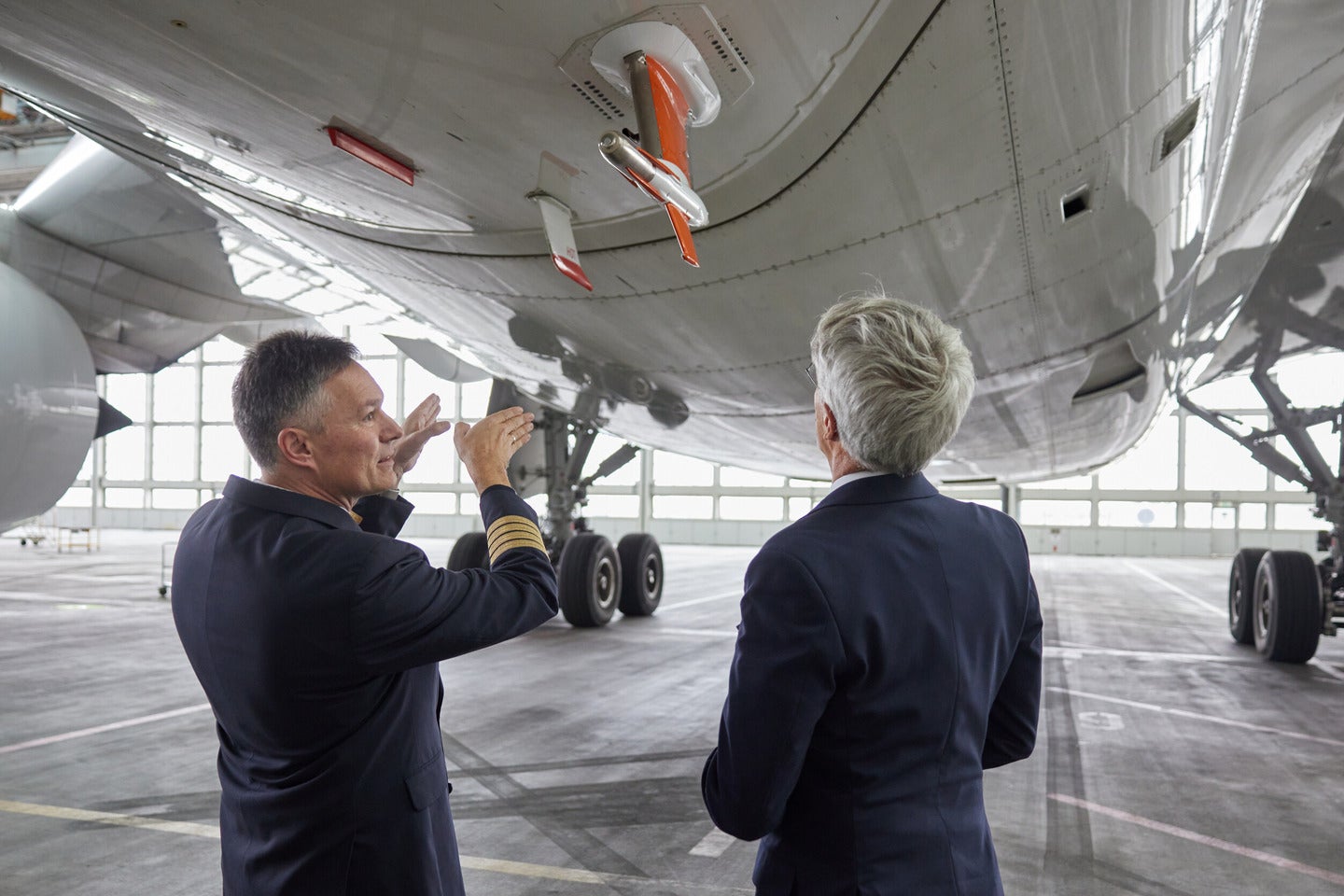
Together with the Karlsruhe Institute of Technology (KIT), the German airline Lufthansa is transforming its Airbus A350-900 into a climate research aircraft from 2024.
For the first time, scientists from the Lufthansa Group successfully tested the measuring probe system in flight after attaching it to the bottom fuselage of the A350. In the airspace above southern Germany, Lufthansa pilots finished a flight programme planned with the certification authorities.
Following this will be routine passenger flights in 2024 and the Airbus will gather thorough climatic data for the European research infrastructure IAGOS-CARIBIC.
The Lufthansa company has been committed to climate research since 1994 and has since equipped several long-haul aircraft with special measuring instruments, which include the IAGOS-CARIBIC.
“We want to make flying more sustainable,” said Jens Ritter, Lufthansa Airlines CEO. “That is why we have been supporting climate research for decades”
“Our aim is to make a valuable contribution to climate research. The data that our aircraft will collect worldwide in the future will help to improve today’s atmospheric and climate models and thus their informative value for the future climate on earth”.
According to experts from KIT, it gathers information on the composition of the air in an efficient manner throughout time. Twelve research institutions (eleven from Europe and one from the USA) have joined forces to create a partnership that has created over 20 extremely sophisticated measurement devices that can monitor more than 100 distinctive trace gases, aerosols and cloud characteristics.
Dr. Andreas Zahn, group leader at the Institute for Meteorology and Climate Research and coordinator of IAGOS-CARIBIC, said: “With the highly accurate measurement data, we can understand which processes change, how strong and what their influence on climate change could be in the future.”
“No other measuring device, neither from the ground nor from the satellite, can deliver such high-resolution multi-parameter data.”
According to KIT, “atmospheric greenhouse effect occurs between the earth’s surface and ten to twelve kilometres above sea level”. To gain an understanding of this, KIT scientists with combined efforts from the Lufthansa group will use the CARIBIC laboratory to measure the air composition in this high-altitude region for at least 15 to 20 years.
The European research infrastructure IAGOS has highlighted that they use passenger aircraft because the cost of measurements on board the CARIBIC passenger plane is low and just a tiny portion of that for research aircraft, yet they can last for decades.



